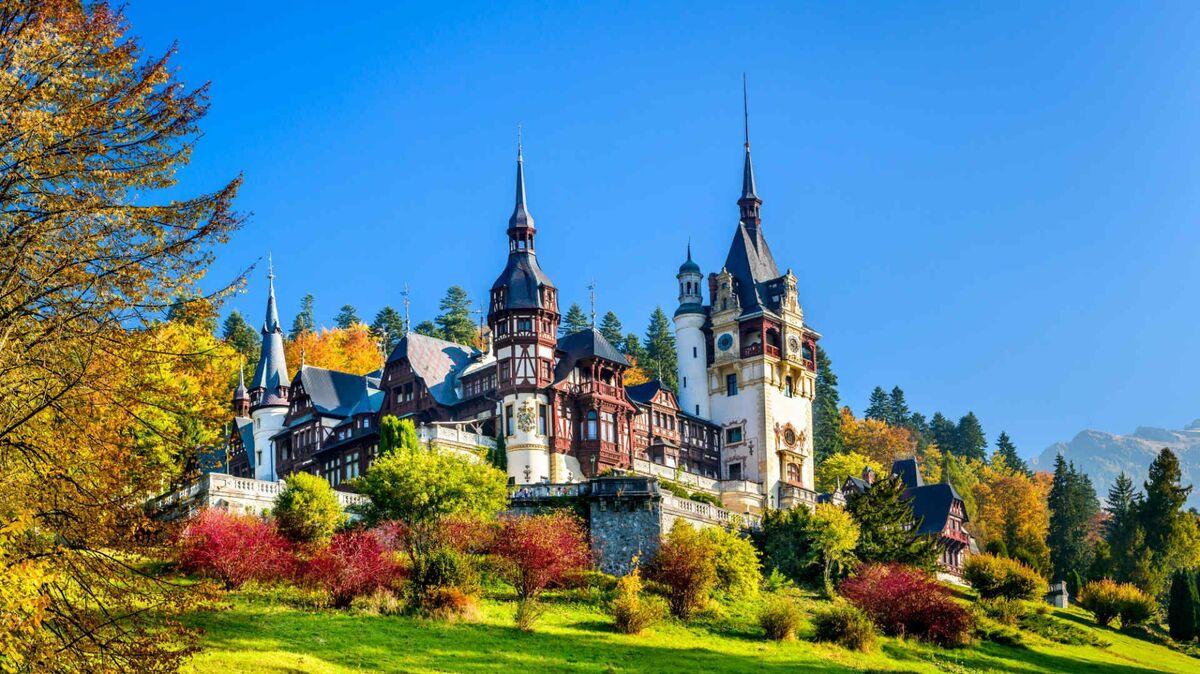
Ever wondered what makes Romania such a unique corner of the world? Well, you're about to find out! Nestled in the heart of Eastern Europe, this country is a tapestry of landscapes, history, and culture that's as rich as it is intriguing. From the legend of Dracula to the world's heaviest building, Romania is full of surprises that defy expectations. But it's not just about vampires or architectural marvels; there's so much more beneath the surface. With a history stretching back to the days of the Roman Empire and a cultural heritage that's as diverse as its geography, Romania offers a fascinating journey for the curious mind. Ready to dive into the 20 most fascinating facts about Romania? Let's get started and uncover the wonders that await in this enchanting land!
Key Takeaways:
- Romania is a land of captivating traditions, from the Festival of Maidens to the birthplace of Olympic legend Nadia Com?neci. Its rich culture and natural wonders make it a must-visit destination.
- With its stunning landscapes, vibrant festivals, and warm hospitality, Romania offers a unique blend of old-world charm and modern allure. From its historic landmarks to its delicious cuisine, there's something for everyone to enjoy.
Discover the Heart of Romania
Romania, a country rich in history, culture, and natural beauty, offers a unique experience for travelers and locals alike. From its stunning landscapes to its medieval castles, there's much to uncover about this Eastern European gem.
-
Romania is home to the world's largest administrative building, the Palace of the Parliament in Bucharest, second only to the Pentagon in the United States when considering floor area. This colossal structure is a testament to the country's architectural ambition.
-
The country boasts the most castles and chateaux per capita in Europe. Among these, Bran Castle often steals the spotlight, widely known as "Dracula's Castle," though its connection to Vlad the Impaler—the inspiration for Dracula—is tenuous at best.
A Dive into Romanian Traditions
Romanian culture is a tapestry of traditions and folklore, with roots stretching back through the ages.
-
One of the most enchanting traditions is the annual "Festival of Maidens" in Transylvania, where young women dress in traditional attire and gather to celebrate spring, youth, and potential marital prospects.
-
Romania is the birthplace of the famous gymnast Nadia Com?neci, the first to score a perfect 10 in an Olympic gymnastic event at the 1976 Montreal Olympics. Her achievement brought Romania into the global sports spotlight.
Romania's Natural Wonders
The country's geography is as diverse as its culture, featuring everything from dense forests to serene beaches.
-
The Carpathian Mountains, stretching across Romania, are home to one of the largest undisturbed forests in Europe. These forests are a haven for wildlife, including the continent's largest population of brown bears.
-
Romania also shelters the Danube Delta, the second-largest river delta in Europe, renowned for its biodiversity and as a sanctuary for migratory birds from across the globe.
Culinary Delights of Romania
Romanian cuisine is a reflection of the country's rural heritage, with dishes that are hearty and rich in flavor.
-
A staple in Romanian diet is "m?m?lig?," a cornmeal porridge often compared to Italian polenta, traditionally served with cheese, sour cream, or stews.
-
Another beloved dish is "sarmale," cabbage rolls filled with minced meats, rice, and herbs, slowly cooked in a tomato sauce. This dish is a must-try for anyone visiting Romania.
Romania's Contribution to Technology and Science
Beyond folklore and culinary delights, Romania has made significant strides in technology and science.
-
On the tech front, Romania ranks among the top countries worldwide in internet speed and connectivity, boasting an incredibly tech-savvy population.
-
The country is also the birthplace of Henri Coand?, the inventor of the Coand? effect in fluid dynamics, which has applications in aviation technology and beyond.
Festivals and Celebrations
Romanians know how to celebrate, and their calendar is dotted with festivals that are vibrant and full of life.
-
One of the most spectacular is the George's Day (Sânziene) celebration, where locals don traditional costumes and search for the mythical flower of Sânziene. This event is a beautiful display of Romanian folklore and traditions.
-
The Untold Festival, one of Europe's biggest music festivals, takes place in Cluj-Napoca. It attracts music lovers from around the world with its impressive lineup of artists and bands.
Romania's Historical Landmarks
History buffs will find Romania a treasure trove of sites that tell the story of a rich and tumultuous past.
-
The Sighi?oara Citadel is one of the best-preserved medieval towns in Europe and the birthplace of Vlad the Impaler. Walking through its cobbled streets is like stepping back in time.
-
Another significant landmark is the Merry Cemetery in S?pân?a, known for its colorful tombstones with naïve paintings describing, in an original and poetic manner, the people who are buried there and scenes from their lives.
Romania's Impact on Film and Literature
Romania's landscapes and stories have inspired creators around the world, contributing to its cultural legacy.
-
The country's picturesque villages and castles have served as backdrops for numerous films, including several Hollywood productions seeking authentic medieval settings.
-
Romanian literature, too, has made its mark internationally, with authors like Mircea Eliade and Eugène Ionesco being celebrated for their contributions to philosophy, religion, and theater.
Embracing the Romanian Spirit
Romania is a country of contrasts and diversity, offering something for everyone—from the history enthusiast to the nature lover, from the foodie to the tech geek.
-
Its people are known for their hospitality and warmth, making visitors feel welcome with their rich traditions and vibrant community life.
-
With its mix of modern cities and rural landscapes, Romania provides a unique blend of the old and the new, inviting travelers to experience its rich cultural tapestry and stunning natural beauty.
-
The Romanian language, a Romance language, is a direct descendant of Latin, sharing many similarities with Italian, French, Spanish, and Portuguese, making it a linguistic bridge in Eastern Europe.
-
Lastly, Romania's commitment to preserving its natural and cultural heritage while embracing modernity makes it a fascinating country to explore, promising an unforgettable experience for all who venture within its borders.
A Glimpse into Romania's Rich Tapestry
Romania's story is one of vibrant culture, deep history, and breathtaking landscapes. From the legend of Dracula in Transylvania to the world's heaviest building, the Palace of the Parliament, this country offers a unique blend of myth and modernity. Romanian inventors have left their mark on the world, with Petrache Poenaru's fountain pen and Henri Coanda's work on jet engines. Traditional festivals like Martisor and the Merry Cemetery in Sapanta showcase Romania's rich cultural heritage and unique approach to life and death. With its diverse wildlife, including the largest population of brown bears in Europe, Romania is a haven for nature lovers. This country truly is a place where history, innovation, and natural beauty intersect, offering endless discoveries for those eager to explore. Romania beckons with open arms, inviting you to delve into its mysteries and marvels.
Frequently Asked Questions
Was this page helpful?
Our commitment to delivering trustworthy and engaging content is at the heart of what we do. Each fact on our site is contributed by real users like you, bringing a wealth of diverse insights and information. To ensure the highest standards of accuracy and reliability, our dedicated editors meticulously review each submission. This process guarantees that the facts we share are not only fascinating but also credible. Trust in our commitment to quality and authenticity as you explore and learn with us.


